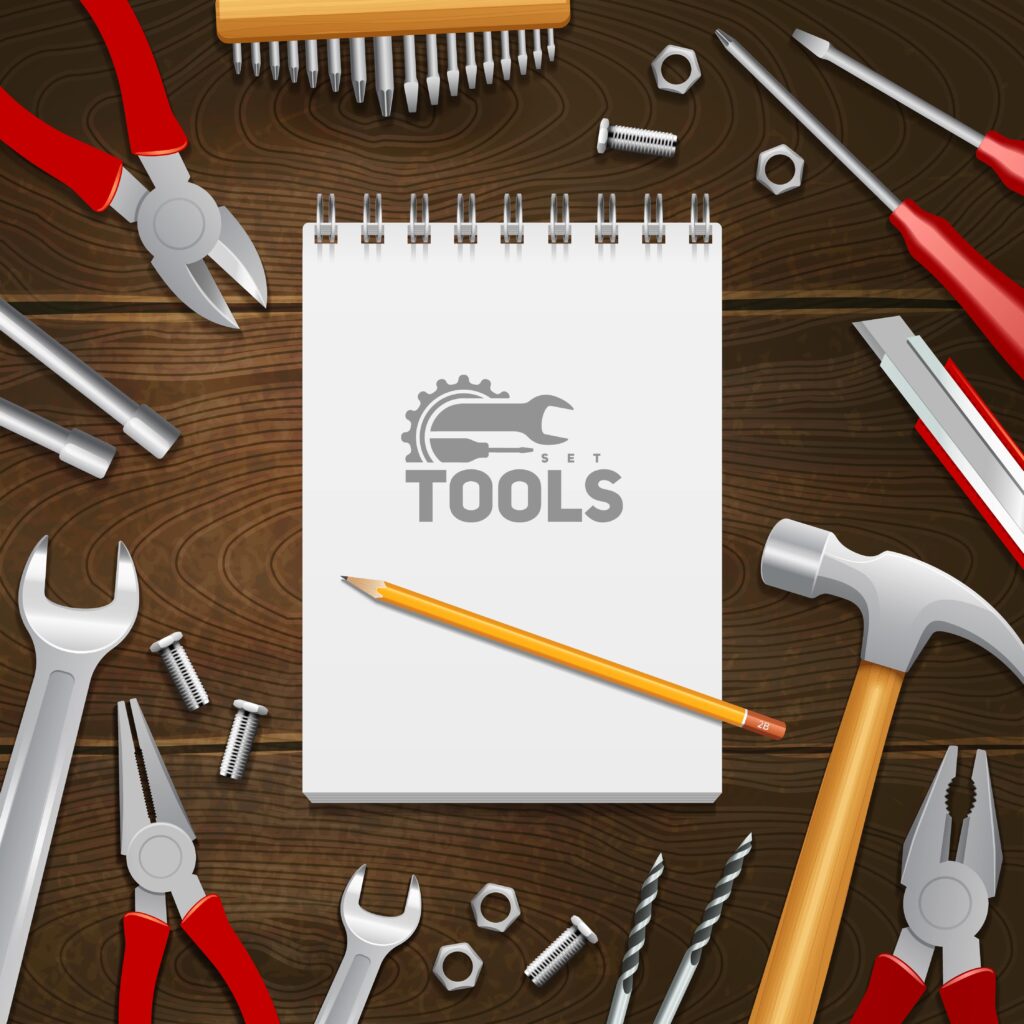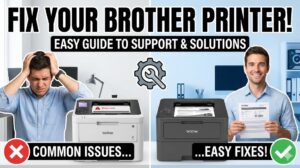Finding the best all-in-one printers 2025 has to offer can transform your workspace. These versatile machines handle printing, scanning, copying, and often faxing, all from one device. Whether you work from home, run a small business, or just need a reliable family printer, choosing the right model matters. This guide walks you through everything you need to know about modern all-in-one printers and helps you pick the perfect match for your needs.
What Are All-in-One Printers and Why Choose Them?
All-in-one printers combine multiple office machines into a single device. They print, scan, and copy documents without needing separate equipment. Many models also include fax capability, though this feature is becoming less common as digital communication takes over.
These multifunctional devices save space and money. Instead of buying a printer, scanner, and copier separately, you get everything in one unit. They share the same paper supply and use the same ink or toner, which simplifies maintenance.
Modern all-in-one printers offer impressive features. Wireless connectivity lets you print from phones and tablets. Automatic document feeders speed up scanning and copying multi-page documents. Duplex printing saves paper by automatically printing on both sides. Cloud integration enables printing from anywhere.
The technology has improved dramatically in recent years. Print quality rivals professional printing for most purposes. Scanning resolution captures fine details. Speed has increased while prices have dropped. Today’s best all-in-one printers 2025 models deliver professional results at consumer-friendly prices.
6 Essential Features to Look for in All-in-One Printers

1. Print Technology: Inkjet vs Laser
The fundamental choice is between inkjet and laser technology. Each has distinct advantages depending on your needs.
Inkjet all-in-one printers excel at color printing and photos. They handle various paper types well, including glossy photo paper. Initial costs are lower, making them budget-friendly. However, ink cartridges can be expensive over time, especially if you print frequently.
Laser all-in-one printers shine for text documents and high-volume printing. They print faster and have lower cost per page. Toner lasts much longer than ink. They’re ideal for offices that print hundreds of pages monthly. The downside is higher upfront cost and typically weaker color photo printing.
For home use with occasional color printing, inkjet works well. For office environments with heavy text printing, laser makes more sense. Consider your primary printing tasks when deciding.
2. Print Speed and Volume Capacity
Speed matters when you print regularly. Check both black and white and color print speeds, as these often differ significantly.
Budget models typically print 8-10 pages per minute. Mid-range printers reach 15-20 pages per minute. Professional models can exceed 30 pages per minute. Faster printing costs more but saves time.
Also consider monthly duty cycle. This indicates how many pages the printer can handle each month without excessive wear. Home users might print 200-500 pages monthly. Small offices could need 1,000-3,000 pages. Match the printer’s capacity to your actual usage.
Paper tray capacity affects convenience. Small trays holding 50-100 sheets require frequent refilling. Larger trays with 250-500 sheet capacity work better for busy environments.
3. Scanning and Copying Features
Scanning quality varies widely between models. Basic scanners offer 600 dpi (dots per inch), adequate for text documents. For photos and detailed graphics, look for 1200 dpi or higher.
Automatic Document Feeders (ADF) are invaluable for multi-page scanning. They automatically feed pages through the scanner, saving you from manual feeding. Some ADFs handle duplex scanning, capturing both sides of pages automatically.
Copying features should include multiple copies, reduction/enlargement, and quality settings. More advanced models offer collating, N-up copying (multiple pages on one sheet), and ID card copying.
Flatbed scanners accommodate books, magazines, and bound documents that won’t feed through an ADF. The best all-in-one printers 2025 include both flatbed and ADF options.
4. Connectivity Options

Modern connectivity is essential for flexible printing. WiFi enables printing from multiple devices without cables. Look for dual-band WiFi support for better reliability.
Mobile printing apps make smartphone printing simple. HP Smart, Epson iPrint, Canon PRINT, and Brother Mobile Connect are manufacturer-specific apps. Apple AirPrint and Android Mopria provide cross-platform options.
Ethernet ports benefit office environments with wired networks. USB connections work for direct computer connections. Some models include NFC (Near Field Communication) for tap-to-print from compatible phones.
Cloud printing services let you print from anywhere. Check which services your printer supports, such as HP Smart, Epson Connect, or Canon PIXMA Cloud Link.
5. Ink or Toner Cost and Availability
Operating costs often exceed purchase price over the printer’s lifetime. Research ink or toner costs before buying any all-in-one printer.
Calculate cost per page for both black and color printing. Multiply by your expected monthly volume. This reveals true ownership cost. Some budget printers have expensive cartridges that make them costly to operate.
Consider printers with separate color cartridges rather than tri-color cartridges. Separate cartridges let you replace only the depleted color, saving money. Tri-color cartridges must be replaced when any single color runs out.
High-yield or XL cartridges cost more upfront but reduce cost per page significantly. If you print regularly, they’re worth the investment.
Some manufacturers offer ink subscription services. HP Instant Ink and Epson ReadyPrint deliver cartridges automatically when levels run low. These programs can save money for consistent users.
6. Build Quality and Reliability
Durability affects long-term satisfaction and value. Read reviews on sites like Consumer Reports to learn about reliability issues with specific models.
Look for solid construction with quality materials. Flimsy plastic components break easily. Check that paper trays slide smoothly and feel sturdy. Control panels should be responsive and intuitive.
Brand reputation matters. Established manufacturers like HP, Canon, Epson, and Brother have proven track records. They offer better customer support and readily available replacement parts.
Warranty coverage indicates manufacturer confidence. Standard one-year warranties are common. Longer warranties or affordable extended coverage options suggest better quality.
Top Categories of All-in-One Printers for Different Needs

Different users have different priorities. Budget-conscious home users need affordable operation and good photo printing. HP DeskJet and Canon PIXMA series offer excellent value with reliable performance.
Small business owners require speed, durability, and low operating costs. Brother MFC series and HP OfficeJet Pro models balance performance with affordability. They handle high volumes without frequent breakdowns.
Creative professionals need superior color accuracy and photo quality. Epson EcoTank Photo and Canon PIXMA Pro series deliver professional-grade results. They support various paper sizes and specialty media.
Large offices benefit from laser all-in-one printers with enterprise features. HP LaserJet Pro and Brother MFC-L series offer fast speeds, large paper capacities, and robust security features.
Students and occasional users can choose compact models with basic features. Simple wireless printing and scanning at low initial cost suits light usage patterns.
Common Mistakes When Choosing All-in-One Printers
Focusing only on purchase price leads to disappointment. Cheap printers often have expensive ink that costs more over time. Always research operating costs before deciding.
Ignoring print volume needs causes premature failure. Light-duty printers break down quickly under heavy use. Check the monthly duty cycle and choose accordingly.
Overlooking physical size creates space problems. Measure your available space and compare it to printer dimensions. Remember that printers need clearance for paper trays and covers to open.
Skipping reviews means missing known issues. Real user experiences reveal problems that specifications don’t show. Look for patterns in complaints about reliability, print quality, or software issues.
Buying more features than needed wastes money. Fax capability is often unnecessary today. Extra paper trays might go unused. Focus on features you’ll actually use regularly.
Neglecting mobile printing support causes frustration in our smartphone-centric world. Ensure the printer supports your devices and preferred printing methods.
Assuming all brands are equal overlooks important differences. Some manufacturers offer better software, customer support, or cartridge availability. Research brand reputation carefully.
Frequently Asked Questions
Q: What’s better for home use, inkjet or laser all-in-one printers? Inkjet suits most homes better due to lower initial cost and better photo printing. Choose laser only if you print mostly text documents in high volumes. For occasional color printing and photos, inkjet delivers better value and quality.
Q: How long do all-in-one printers typically last? Quality all-in-one printers last 3-5 years with normal use. Heavy usage may shorten lifespan to 2-3 years. Proper maintenance like cleaning print heads and using quality paper extends printer life significantly.
Q: Can I use third-party ink cartridges safely? Third-party cartridges can work but vary in quality. They void warranties on some printers. Premium third-party brands often perform well and save money. Generic cheap cartridges may leak or clog print heads, so research carefully.
Q: Do I need an expensive all-in-one printer for good quality? Not necessarily. Mid-range models around $150-300 deliver excellent quality for most users. Expensive models add speed, capacity, and durability rather than dramatically better print quality. Match the printer to your actual needs.
Q: What size all-in-one printer do I need? Choose based on paper size requirements. Most home users need only letter/A4 size capability. Legal size handling adds convenience for some documents. Wide-format printers for larger paper cost significantly more and suit specialized needs only.
Conclusion
Selecting from the best all-in-one printers 2025 offers doesn’t have to be overwhelming. Focus on your actual printing needs, budget for both purchase and operating costs, and choose a reputable brand. The right multifunctional printer simplifies your work while delivering reliable results.
Modern all-in-one printers pack impressive capability into compact designs. They’ve become essential tools for both home and office use. Whether you need basic printing and scanning or advanced features like duplex copying and mobile printing, today’s market offers excellent options at various price points.
Take time to compare features, read reviews, and calculate long-term costs. The perfect all-in-one printer balances your requirements with your budget, delivering years of productive service. Make an informed choice, and you’ll enjoy the convenience and efficiency that the best all-in-one printers 2025 provide.
Connect Printer to Cloud: Ultimate Guide for Easy Printing Read More.




